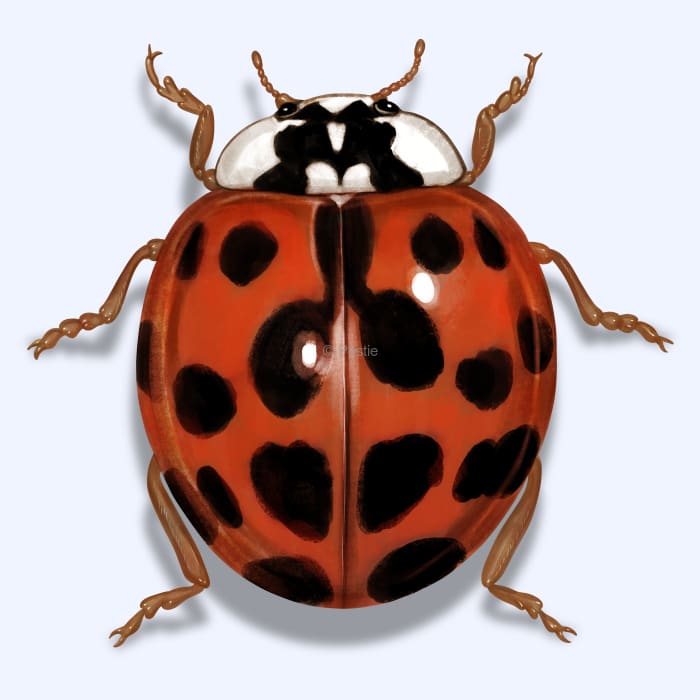How to identify and get rid of Asian lady beetles

Friend or Foe? The invasion of Asian lady beetles
When the weather turns cool and the days are getting shorter, you know the insects are going to start their invasion into your home. One of those notorious pests that sometimes come in the hundreds and thousands is Asian lady beetles.
During the spring and summer, Asian lady beetles are busy hunting for aphids and other small, soft-bodied insects, keeping your garden plants pest-free. However, during the fall, Asian lady beetles instinctively find shelter where they can overwinter. They like tall, sunlit vertical structures, such as the south-facing wall of your home.
Asian lady beetles will find their way into gaps and cracks, under siding, or inside your home. However, they can’t survive the high temperatures on window sills and will often die inside your home. They tend to congregate in large groups, littering the floor beneath your windows.
How to identify Asian lady beetles
Asian lady beetles look like your typical ladybug, with a dome-shaped body and a flat bottom. They come in a wide variety of colors and markings. Some are orange or red with or without dots on their backs, and some are black with red and orange dots. The most distinct characteristic of Asian lady beetles is their M-shaped mark on the shield that covers their head.
How big are Asian lady beetles?
Asian lady beetles are typically about 1/4 inch long.
What other pest looks like an Asian lady beetle?
Asian lady beetles are often confused with native ladybugs. The key difference is the 'M'-shaped marking and their tendency to invade homes in large numbers.
Where do Asian lady beetles live?
They are found throughout the United States, particularly in areas where aphids, their primary food source, are abundant.
They are commonly found near windows, light fixtures, or in warm, sunny parts of the home during fall and winter.
How to get rid of Asian lady beetles
One of the best ways to keep Asian lady beetles out of your home is prevention. That includes:
- Sealing cracks and gaps in windows and screens
- Repairing siding
- Applying an insect barrier spray (like the one Pestie offers!)
If you already have lady beetles in your home, whatever you do, DON’T SMASH THEM! They can release a smelly substance that also stains. When disturbed, they have a behavior called reflexing bleeding that helps deter predators. They can force themselves to bleed from the joints in their legs.
Instead, vacuum them up or sweep them up and dispose of them outside.
Treat lady beetles with Pestie
If you're still having trouble keeping lady beetles away, the best option is to use a pro-grade, effective pest control solution like Pestie.
Pestie is a do-it-yourself pest control solution that's specially designed to keep lady beetles and other pests away from your home.
With Pestie, you can rest easy knowing that your living space is protected and free of creepy crawlies. And the best part? It's designed for people, pets, and the planet, so you can say goodbye to harsh chemicals and hello to peace of mind!
- Save hundreds compared to traditional annual pest plans
- People, pet, and planet-friendly
- Pro-grade customized formulas
Quick facts
- Scientific name
Harmonia Axyridis
- Other common names
Asian Lady Beetles, Multicolored Asian Lady Beetles, Halloween Beetles, Harlequin Lady Beetles
- Colors
Red, orange, yellow, black
- Life span
2 years
- Diet
Aphids
How dangerous are Lady Beetles?
Low danger risk
While not harmful, they can become a nuisance when they invade homes in large numbers. Some people might experience allergies to their excretions.
Asian lady beetles often outcompete native ladybugs for food, causing a decline in native species. However, Asian lady beetles are less likely to be eaten by predators, are resistant to ladybug diseases, and are less likely to be parasitized.








